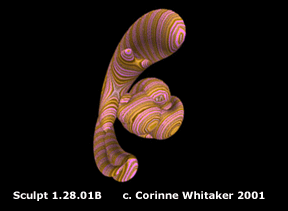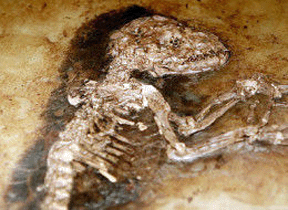
Pentimenti


Robert Kaplan tells us that "the Sumerians wrote by pressing...the tip of a hollow reed into wet clay tablets, which were then preserved by baking. Masses of these...survive...from those...remote days;...computer punchcards (from) the Sixties largely do not."
NASA has already acknowledged that it can no longer read the computerized records of its early space explorations. Adobe is unaware of its early Special Edition CD on Masters of Photoshop (which I have, and appear in). I maintain archives - data, emails, paintings, models, writings, technical specifications - that cannot be deciphered. It is not only the critical efforts at mastering a new technology, the descriptions of our failures and our attempts to overcome them, that matter, but also our feelings as we plunged into an unexplored arena of human thought.
Those were the days of the Apple IIe, booting it up with our fingers crossed, staring at a blank black screen with no instructions, no manuals, no icons, no Internet, no bookmarks, asking ourselves how we could get anywhere. And when we got there, often accidentally, how would we ever get back, to our desktops, to where we had just been? For artists there was the dual experience of leaving rules and history behind, removing Renaissance perspective and Kodak from our shoulders, and then venturing off a visual cliff into an unknown geography.
We have certainly tried. First we had floppies. Then came Syquest disks. Then JAZ cartridges. Then CD's, DVD's, and now Blue Ray. Each advance required us to rearchive from the prior state. Each step forward left some fragments behind. In the meantime Apple morphed into Mac, while PC's lurched from one operating system to another. Companies eager to preserve their economic advantage upgraded their applications as backward-incompatible, a fancy way of saying there's no money in yesterday, buy more if you want to keep up with the Googlobytes.
Do you know of any society that does not preserve its past? The one that comes immediately to mind is the Etruscan civilization, and we make strenuous efforts to figure out who they were and how they lived. Can you imagine baseball without statistics? Yet we seem unable to savor our own recent transformation from an industrial to a digital age, and particularly to revisit that rare cusp where the two parted ways. Just as one small example: a workshop in Norway called Atelier Nord was one of the first to present digital imaging on the Internet. In fact they put up one of the earliest slide shows online, a not-inconsequential technical achievement at the time, of a series that I did called "U aRe eLle". Unfortunately Atelier Nord has removed much of its historic archive from the Web. When I contacted them, the young Turk now in charge said that he was too busy to worry about older materials. Reminding him that he was the guardian of cultural history was useless.
The Marion Scharmann Gallery in Koln, Germany, recently wrote this curatorial statement: "Memories, like pentimenti, endure beyond attempts to erase them....They constitute the foundation for our relationship with the world and its relationship with us." Pentimenti, they go on to explain, is a term used in art preservation. It describes the evidence on a canvas of a previous painting beneath the visible one, revealed by X-ray or other modern techniques. Pentimenti, at least, are recoverable. Where are the visual archaeologists, those who love the intricacies of algorithms, who will build an application that spans platforms? Who will develop a universal language to preserve our digital pentimenti?
It is possible that future generations will have little respect for us - we haven't been very kind to the planet or even to each other. We tend to be hate mongers, war mongers, beasts of bigotry. Bill Maher calls us "the trick and trap and screw" society. But at least I'd like them to understand that we had a more noble side. When tomorrow looks into the mirror of history, what will it see? Nuclear ashes are hardly an endearing epitaph.
Take a close look (above) at Ida, the 47 million-year-old primate fossil recently disclosed in Norway. (Late note: Ida was actually unearthed in Germany, as I learned from an alert viewer.) Then compare it to the blob alongside, which I created eight years ago. Traces of genetic memory are striking, but we would be foolish to depend on unconscious remnants of DNA for our legacy. What about a more concerted effort to preserve the late 20th and early 21st centuries and their artists? Can someone out there write an algorithm we can all share? Should I try 1-800-555-IDeA?
c. Corinne Whitaker 2009